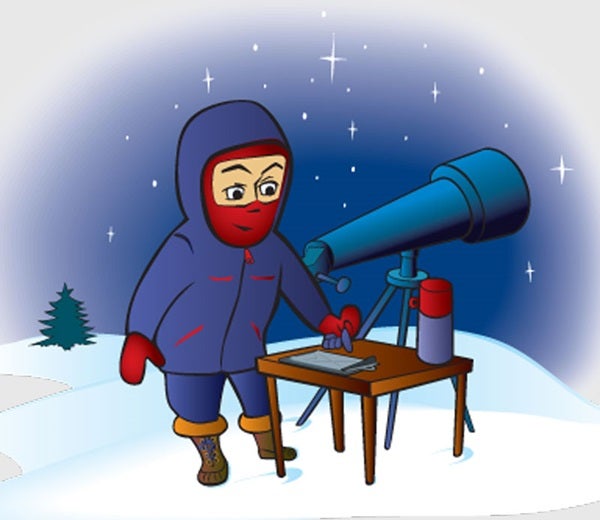I start with long thermal underwear made of a material that wicks moisture away from the body (in this case a polyester blend), unlike 100 percent cotton, which gets wet with perspiration and makes me feel cold and clammy. Uh oh! Seems as though I’ve gained a few pounds since last winter. I’d rationalize that a little extra body fat will help insulate me from the cold, but my doctor won’t buy it. Whales and walruses, yes. Chaple, no!
Proper cold-weather wear means layering my clothing while making sure it’s loose enough to trap pockets of air and allow for freedom of movement. I begin with jeans (sweatpants if it’s really cold), a long-sleeve wool shirt, and a pair of above-the-calf wool socks.
Before heading out the door, I add part of the outermost layer — an insulated one-piece snowmobile suit paired with a scarf to prevent heat from escaping through the neck opening. Sometimes, I substitute bib overalls (the kind skiers wear) for the snowmobile suit. In either case, I top things off with an insulated winter jacket. If I start to feel overly warm, I can always unzip or remove the jacket. Better to be overdressed and have the option of shedding some outer clothing than to suffer the chills by being underdressed.
Now for the extremities. Because a lot of body heat escapes through the head, I wear a ski hat that I can pull down over my ears. For colder than normal situations, I prefer a balaclava — a “sock” that covers the entire head and has an oval slit for the eyes. Wool gloves warm my hands while allowing the freedom to adjust or change equipment. In my early ice fishing days, my feet suffered the most from the cold. I’d cram them into a pair of rubber boots, and by day’s end my toes were absolutely numb. Now I wear insulated boots — loose enough that I can wiggle my toes. Also, I don’t over-tighten the laces. Now that I’m dressed properly, it’s time to stalk bass and panfish on a frozen lake.
At this point, you may be wondering if you’ve accidentally picked up a copy of Field & Stream. Trust me; you’re holding the February 2012 issue of Astronomy. Why the ice fishing lead-in? Simple. If you want to stay comfortable while outside in winter, you need to dress appropriately, and few do that as well as ice anglers.
1. Back up your gloves with chemical hand warmers. Chemical hand warmers are little packets that begin to release heat when opened. You’ll find them at most sporting goods stores. You can also get some for your feet (they get really warm when you move around in them) and use other warmers for your back and stomach.
2. Take breaks. Don’t try to be a hero — you’re not an arctic explorer. If the chills begin to set in, take an indoor break. Warm up with a mug of hot chocolate.
3. Keep moving. Snowshoers and cross-country skiers stay warm because their activity generates a lot of body heat. Backyard astronomy is much more sedentary. Avoid extended periods at the eyepiece and move around a bit between observations. (A few jumping jacks might also help you shed some of those holiday pounds!)
4. Avoid windy conditions. Wind and cold are a bad mix. When an arctic blast begins piling up the snowdrifts, I stay inside and sit by the fireplace with the current issue of Astronomy. Besides, wind makes my eyes teary, and I can’t see anything anyway!
There’s another way to avoid the winter chills. William Tourville of Syracuse, New York, suggests that I write an article about observing winter objects in the fall when the weather is better — for example, Orion is visible by 4 a.m. in early October. Bill may be onto something. I’ll explore his idea in a future issue.
But right now, it’s time to head out to the pond. It’s largemouth bass this morning, and the Orion Nebula tonight!
Questions, comments, or suggestions? Email me at gchaple@hotmail.com. Next month: Which offers the sternest challenge — the Messier Marathon or the Boston Marathon? Clear skies!











